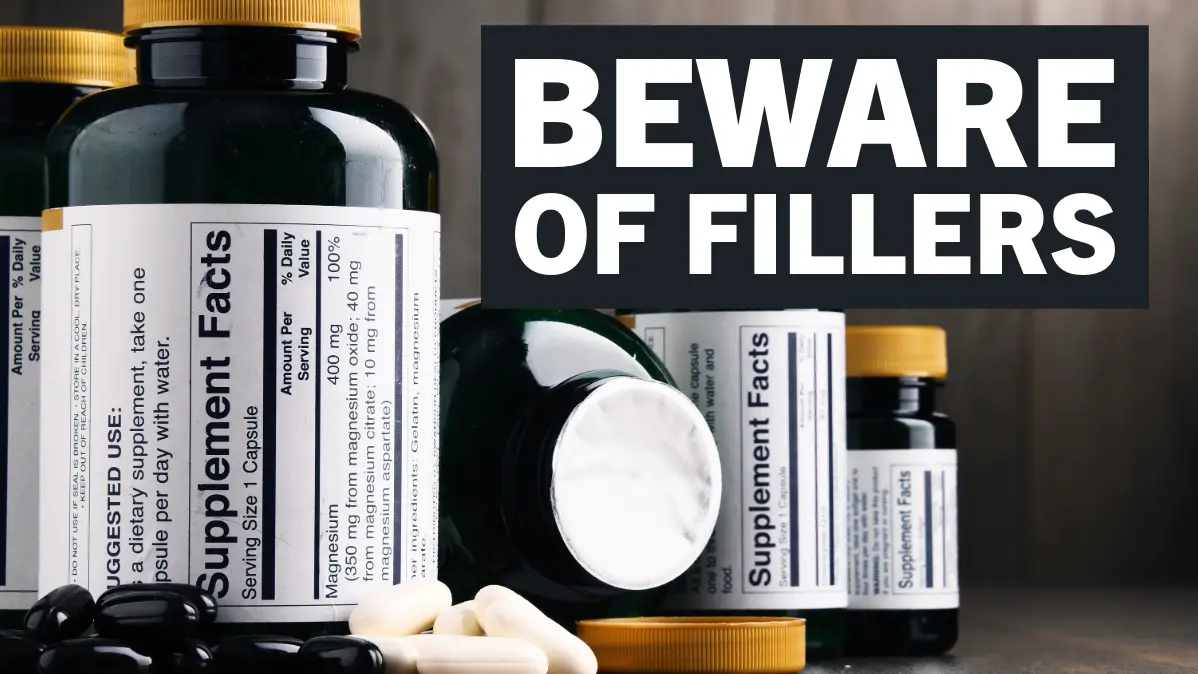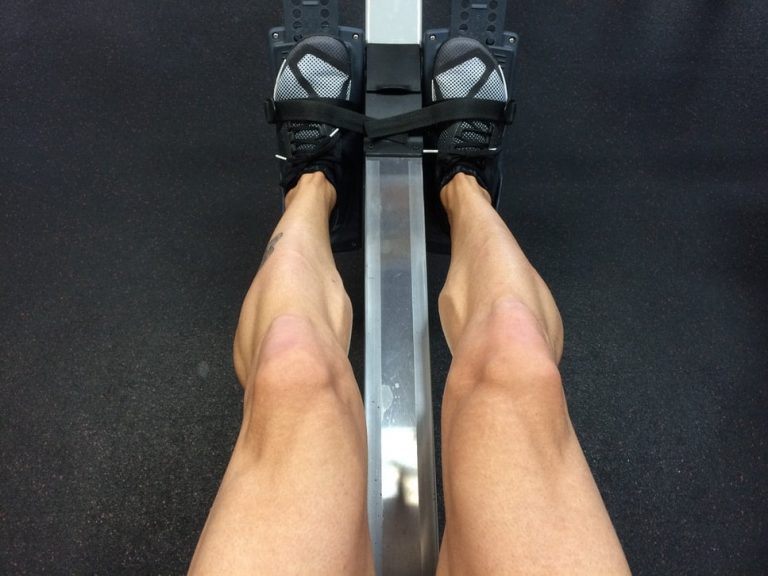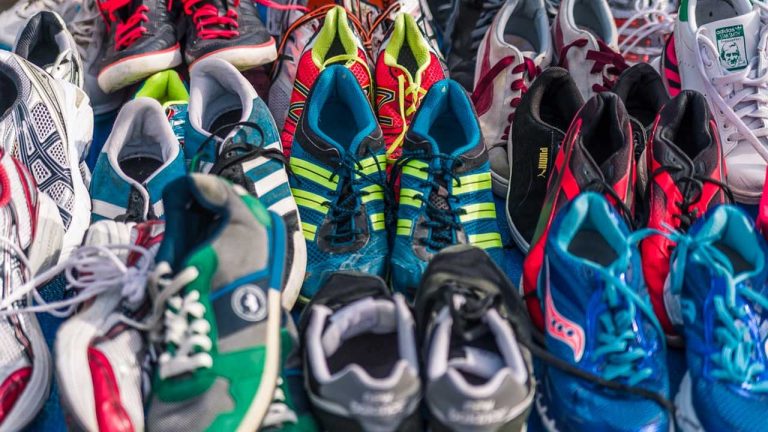How to Stop Chafing Between Thighs for Guys: Essential Tips for Blokes

ListedFit is reader-supported. When you buy through links on our site, we may earn a small commission.
Chafing between the thighs can be a painful and uncomfortable issue for guys, especially during physical activities or warm weather.
The friction caused by skin rubbing against skin or ill-fitting clothing leads to redness, irritation, and even blisters.
Fortunately, there are several effective ways to prevent and treat chafing, ensuring that you can stay active and comfortable in all situations.
Quick Summary

It will help you to understand the causes of chafing and how to identify the symptoms.
You can actually make simple changes to your daily routine and wardrobe, to significantly reduce the risk of chafing and alleviate discomfort when it occurs.
Key Takeaways
- Chafing between thighs is a common issue for men caused by friction and can be prevented through mindful practices.
- Adjusting daily routines and selecting proper attire can help minimize chafing and its symptoms.
- Recognising when to seek professional medical advice ensures timely and effective treatment for severe cases.
Contents
What Causes Inner Thigh Chafing?

Chafing between the thighs is something you may have experienced, especially during the warmer months or after engaging in physical activity. In this section, we’ll discuss the various factors that contribute to this unpleasant sensation.
First and foremost, friction plays a significant role in causing chafing. When your thighs rub against each other during walking, running, or exercising, it generates friction. This repetitive rubbing can eventually lead to irritation, redness, and discomfort in the area where your skin touches.
Moisture, particularly sweat, can also be a major culprit. As you work up a sweat during a workout or on a hot day, the increased moisture in the area can exacerbate the friction and make chafing more likely. The salt residue left behind as sweat evaporates can further irritate the skin, leading to those uncomfortable welts.
Your choice of clothing can either help prevent chafing or contribute to the problem. Tight clothing, such as leggings or cycling shorts, can sometimes cause additional friction, especially if they don’t fit correctly. On the other hand, loose clothing can also be an issue, as it allows more room for your thighs to rub against each other. The fabric of your clothes is important, too. Cotton is usually a good choice because it’s soft, breathable, and absorbs moisture, whereas synthetic fabrics may trap heat and contribute to sweating.
Bacteria can also play a role in chafing. The groin area is prone to harbouring bacteria due to its warm, moist environment. This bacterial growth can lead to further irritation and inflammation, making the chafing even worse.
To help prevent chafing between your thighs, consider the following tips:
- Choose breathable, moisture-wicking fabrics for your workout and daily wear
- Opt for well-fitting clothes that don’t cause excessive friction
- Keep your skin clean, dry, and free of excess moisture
- Apply anti-chafing or lubricating products, to reduce friction in the affected area
- Stay hydrated to minimise salt residue from accumulating on your skin
Identifying Serious Thigh Chafing Symptoms
When you’re experiencing chafing between your thighs, it’s important to properly identify the symptoms so you can take the right steps to treat and prevent it. Chafing occurs when your skin rubs together, creating friction that can lead to skin irritation.
One of the first signs you might notice is a bit of redness in the affected area. This is natural, as the friction causes inflammation and irritation. It can be particularly noticeable in the inner thigh, groin area, and even around your butt, which are prime spots for chafing, especially in guys.
Not only do you have to deal with redness, but you might feel a stinging or itching sensation. Your skin can become quite sensitive, and you could even experience slight swelling. If you have sensitive skin, these symptoms might be more pronounced.
As chafing continues, you may spot some welts, sores, blisters, or bleeding. It’s important to keep an eye out for these, as they can indicate more severe chafing. Skin infections might occur if you don’t address the problem quickly.
Keep in mind that even after the initial irritation subsides, you might still feel a bit of itchiness. This is because your skin is trying to heal itself. While this is a good sign, it’s still crucial to take necessary precautions to ensure chafing doesn’t happen again.
Remember, the key to combating chafing is understanding the symptoms and taking action to treat and prevent it. So, next time you experience any of these symptoms, you know what you’re dealing with and can take proper care of your skin.
How to Prevent Chafing for Guys
No one likes the discomfort of chafed thighs while walking or working out. Luckily, there are quite a few ways for you blokes to prevent this pesky problem. Here are some tips to help you out.
First things first, it’s essential to choose the right clothing, as it can make a significant difference in reducing friction between your thighs.
Opt for loose-fitting, moisture-wicking clothes made of breathable fabric, like synthetic fibres, to minimise sweating and keep your skin dry.
Steer clear of cotton when it comes to workout gear, as it can retain moisture and exacerbate chafing.

When it comes to your underwear, look for drier and more comfortable options like athletic boxer briefs or compression shorts made of moisture-wicking fabrics. They’ll help keep your groin area dry and reduce friction while you’re active.
Now, let’s talk about anti-chafing products. Your armpits, thighs, and groin are all prime areas for chafing, so it’s a good idea to apply some sort of barrier between them.
You can use an anti-chafing stick, like Body Glide, some guys use deodorant on chafing-prone areas before heading out for a walk or a workout.
Another useful tip is to moisturise your skin regularly, especially in areas prone to chafing. Well-moisturised skin is more resilient and less likely to become irritated.
Just make sure you use a non-greasy lotion, as heavy creams and oils can trap sweat and make chafing worse.
Lastly, when you know the weather’s going to be hot and humid, take extra precautions to stay dry and reduce the risk of chafing. Switching to moisture-wicking fabrics during the summer and choosing breathable, ventilated clothing can make a world of difference in preventing chafed thighs while walking or exercising.
Recommendations on Everyday Wear
When it comes to preventing chafing between your thighs, the clothes you wear play a crucial role. Choosing the right fabrics and styles can make all the difference in your comfort throughout the day. Here are some recommendations for everyday wear to keep your inner thighs happy and chafe-free.
Firstly, opt for breathable fabrics. Materials like moisture-wicking synthetics or merino wool are ideal as they help you stay dry by drawing sweat away from your skin. Avoid cotton, as it tends to hold onto moisture, which can contribute to chafing. Also, consider mesh panels in activewear for extra ventilation during workouts or hot weather.
Don’t forget to pick clothes that fit just right. Tight clothing can cause friction and irritate your skin, while overly loose garments may bunch up between your thighs, adding to the chafing problem. A good fit ensures that the fabric has enough room to glide over your skin without bunching or rubbing.
By paying attention to your everyday wear choices and prioritising the right fabrics and fit, your inner thighs will thank you as you enjoy a comfortable, chafe-free life.
When selecting bottoms, go for leggings or compression shorts made with moisture-wicking fabric. They not only provide a smooth barrier between your thighs but also help regulate your body temperature. Additionally, snug but comfortable underwear keeps everything in place, reducing friction on your inner thighs.
In the warmer months, pick lighter, breathable clothes that can wick away moisture and help you stay cool. During colder weather, opt for snug-fitting layers made of moisture-wicking fabric to keep your body temperature balanced and maintain a dry environment around your inner thighs.
Finally, don’t forget to follow proper clothing maintenance. Regularly wash and change your clothes, especially your undergarments, to avoid the build-up of dust, sweat, and bacteria that can exacerbate chafing issues.
Effective Home Remedies for Chafing
Chafing between your thighs can be quite uncomfortable, but don’t worry, mate! You’ve got loads of home remedies to choose from to help soothe and prevent chafing. Here are some effective solutions that can help make chafing yesterday’s problem.
Aloe Vera Gel is a brilliant, natural option. You can apply it directly to the affected area to soothe and heal your skin. The gel works by providing a protective barrier and reducing inflammation.
Coconut Oil is another good choice, as it is known to reduce inflammation and promote wound healing. Plus, it smells lovely! Just apply a thin layer to your thighs, and you’ll feel a noticeable difference.
For a more convenient option, Deodorant can work as a temporary lubricant to reduce friction between your thighs. Just slide it on the chafed area, and you’re good to go!
If you’re looking for something to create a barrier to prevent chafing, Petroleum Jelly can work wonders. Apply a liberal amount to your inner thighs for a friction-free experience.
If you prefer a dry solution, try using Cornstarch or Body Powder. These act as good absorbers of moisture and help reduce friction. You can even use Baby Powder or Talcum Powder as alternatives. Just make sure not to overdo it, as too much can cause a paste-like mess.
Got your hands on some Shea Butter? Lucky you! This moisturiser is fantastic for soothing chafed skin because it’s rich in fatty acids, vitamins, and antioxidants. Just massage it onto your thighs for quick relief.
When chafing gets really bad, you might want to consider over-the-counter Anti-Chafe Creams or Zinc Oxide. They create a thick, protective barrier on your skin, preventing friction and further damage.
In addition to all these home remedies, remember to keep your skin clean and dry. Take a shower after any activity that makes you sweat, and gently pat your skin dry. Also, try to rest and wear loose clothing to allow the chafed area to recover.
Finally, if you’re really struggling, don’t hesitate to consult with a doctor. They’ll be able to prescribe more potent creams or medications to help you out.
Now, grab your preferred remedy and say goodbye to chafing, mate! And remember – the best way to help your skin is to mix and match these solutions until you find the perfect combination that works for you.
When Is It Time To Call a Doctor?
Sometimes, chafing between your thighs can go from a mere annoyance to a more serious issue that requires medical attention. Don’t hesitate to reach out to your doctor if you notice any of the following symptoms, as they could indicate an infection or other complications.
- Keep an eye out for excessive redness and swelling in the area – this could be a sign of inflammation or an underlying infection.
- Persistent itching or irritation is another reason to consult your doctor, as it could indicate an issue that needs to be addressed. If you’ve got sores or broken skin that just don’t seem to heal, this could be a breeding ground for bacteria and may lead to a skin infection.
- Sweating can further exacerbate chafing and create a perfect environment for bacterial growth. If you notice an unpleasant smell or pus-like discharge from the area, don’t wait: see your healthcare professional right away.
- Lastly, you should seek medical help if there’s bleeding from the chafed area or if you’re experiencing severe pain, as these could be signs of an infection or a more serious condition.
Frequently Asked Questions
What are the best anti-chafing creams?
There are various anti-chafing creams on the market that can help you prevent chafing.
Some popular options include Chamois Butt’r, and Lanacane Anti-Chafing Gel. These creams create a barrier on your skin, reducing friction and irritation.
Apply them on your inner thighs before any physical activity, and remember to reapply as needed.
How can I prevent inner thigh chafing while running?
To prevent chafing while running, take the following precautions:
1. Stay dry by wearing moisture-wicking clothing that helps keep your thighs fresh and sweat-free.
2. Apply anti-chafing creams or balms to your inner thighs before your run.
3. Choose well-fitted running shorts to avoid excessive fabric rubbing against your skin.
4. Keep your body well-hydrated and consider using a skin protectant like petroleum jelly for added protection.
Are there any effective anti-chafing shorts?
Yes, anti-chafing shorts can help prevent thigh chafing.
Look for shorts specifically designed to reduce friction, such as compression shorts or snug-fitting boxer briefs made of moisture-wicking materials.
These shorts should fit well without being too tight or restrictive.
How can I stop chafing thighs while walking?
To prevent chafing while walking, try the following tips:
1. Wear moisture-wicking and breathable clothing.
2. Choose well-fitted, comfortable shorts or trousers that do not rub on your thighs.
3. Use anti-chafing products like creams or balms on your inner thighs.
4. Keep your skin clean and dry, and change out of damp clothes as soon as possible.
What causes inner thigh chafing in men?
Inner thigh chafing in men can be caused by a combination of factors, including:
1. Repeated skin-on-skin contact.
2. Excessive sweating.
3. Ill-fitting or uncomfortable clothing.
4. Prolonged physical activity, especially in hot or humid conditions.
Can deodorant prevent chafing between thighs?
Yes, deodorant can help prevent chafing between the thighs.
The ingredients in the deodorant act as a lubricant, allowing your thighs to slide past each other instead of rubbing together. This can help reduce friction and irritation.
Plus, using deodorant on your inner thighs may also control sweat and odour. Simply apply your regular stick deodorant to your inner thighs before engaging in physical activity.
Author
- Danny Loeb is a qualified Personal Trainer, Fitness Model and Writer. He enjoys blogging about health and fitness, messing around with Photoshop, and sharing his experiences with everyone.
Latest entries
 NutritionFebruary 6, 2024What Are Fillers in Supplements? – Unveiling Inactive Ingredients
NutritionFebruary 6, 2024What Are Fillers in Supplements? – Unveiling Inactive Ingredients FitnessAugust 23, 2023Best Post-Workout Foods: Great Ideas for Recovery and Results
FitnessAugust 23, 2023Best Post-Workout Foods: Great Ideas for Recovery and Results BulkingJuly 26, 2023Is Rice Good for Bulking? Unveiling the Truth
BulkingJuly 26, 2023Is Rice Good for Bulking? Unveiling the Truth CultureJuly 15, 2023Why Do People Hate Planet Fitness? Read This Before You Join!
CultureJuly 15, 2023Why Do People Hate Planet Fitness? Read This Before You Join!
Affiliates:
This post may contain affiliate links that at no additional cost to you, the site may earn a small commission. We only recommend products we would use ourselves and all opinions expressed on this site are our own.
General Advice:
The information provided in this article is for general informational purposes only. It is not intended as a substitute for professional advice. Always consult with a qualified healthcare professional before starting any new diet, exercise program, or making changes to your health routine.
Accuracy Advice:
While we strive to provide up-to-date and accurate information, the content in this article may not reflect the most current research or medical guidelines. We encourage readers to do further research and consult with professionals for more personalized advice.
Our Recommendations:
The products and services mentioned in any of our articles are recommended based on our independent research and personal experience. We are not sponsored by any company. We aim to suggest products and services we believe are of high quality and could be beneficial to our readers.







After a rough workout session, most times I get inner thigh chafing and it can really be irritating. For me, a good moisturizing and compression tights is enough to calm my burning thighs.
My trusted Vaseline and sometimes baby powder is all I need to soothe my chafed inner thighs. They help me relax well and after a little rest, I forget about the pain.